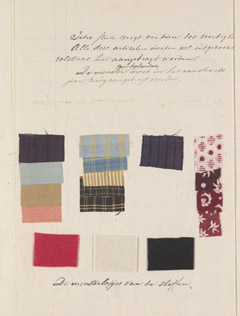Japanese demands > The V.O.C. in Japan

On 27 June 1598 five ships set sail from the Netherlands bound for Asia to identify local trade opportunities. Only one of the ships, De Liefde (The Love), reached Asia: on 19 April 1600 she drops anchor off Japan. Two members of the crew gain the Shogun’s confidence.
In 1609 Japan issues a trade permit to the VOC, allowing the company to trade in all the Japanese ports. This permit marked the beginning of official trade relations between the Netherlands and Japan and enables the VOC to establish a trading post in Hirado.
In 1641, the Dutch were turned out of Hirado. However, unlike the Spanish and the Portuguese for example, they were not expelled from Japan; they were assigned the island of Deshima at Nagasaki, as a location for a trading post. Deshima (214 metres long and 64 metres wide) is connected with the mainland by a bridge. The Netherlands was now the only Western power to trade with Japan.
The Dutch were permitted to stay subject to strict rules. For instance, they were not allowed to leave the island without a Japanese escort. The only break in the monotonous life on the island are the ships arriving from Batavia once a year and the journey to the Shogun's court.
After the VOC became bankrupt in 1795, the State of the Netherlands continued the trade with Japan. Because of the war situation in Europe, the Dutch were unable to reach East Asia. The government in Batavia had difficulty in continuing to trade with Nagasaki. Nevertheless, this trading post was maintained to safeguard the trading monopoly with Japan.
During the 19th century, a number of countries wanted Japan to open her borders and trade with the West. They exert pressure on the Netherlands to bring this about. Since Dutch trade with Japan would benefit from such an opening, King William II sent a request to this effect to the Shogun. The answer was 'no'. In 1853, the United States sent warships to Japan and forced Japan to open its borders.
Read more about:
the Verenigde Oost-Indische Compagnie (United East India Company)
journey to the Court
the demands
